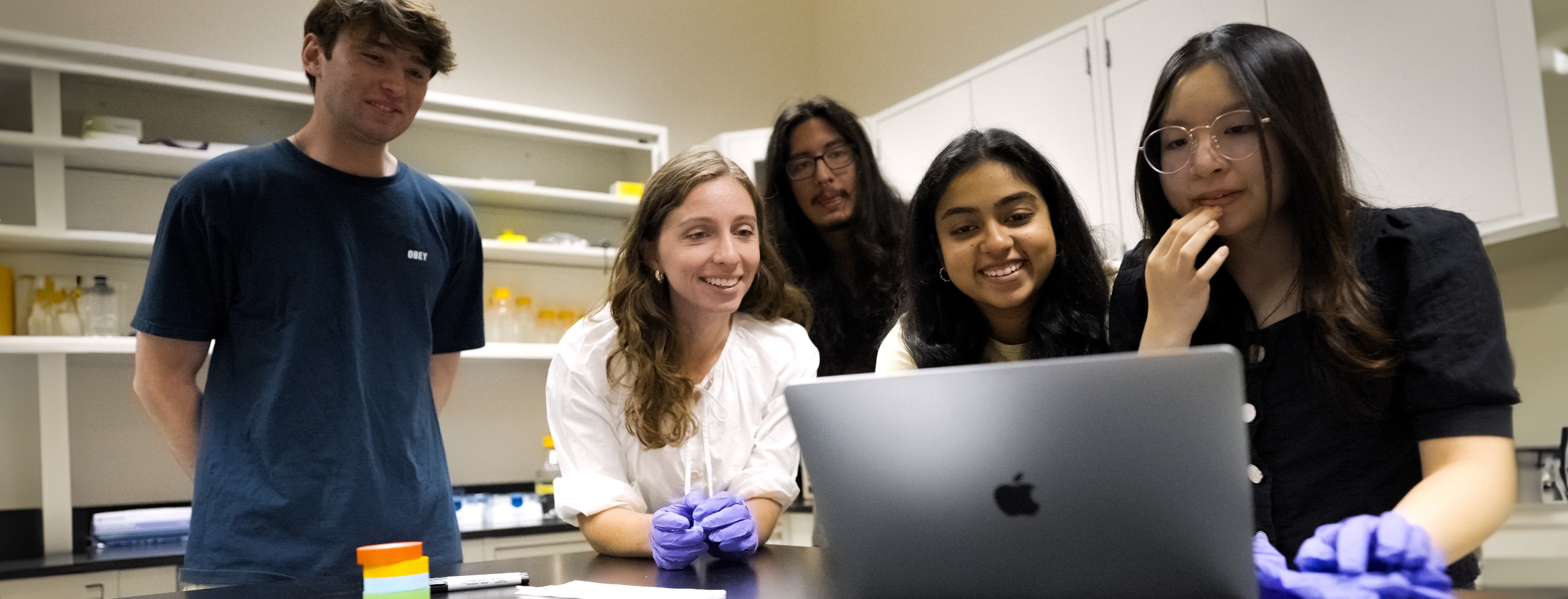By Molecular Design
Fluorescent nanofibers might offer a solution to global water challenges
As engineers, Whitney Fowler and her students use their knowledge of mathematics, science and technology to solve problems and invent new things. Working at the intersection of engineering, chemistry, materials science and biology, Fowler, Natchayaporn Sindhurattavej ’26, Shreya Jampana ’26, Mai Phuong Pham ’25, Leonardo Romero ’25, Anna Grace Rogers ’25 and Griffin Stevens ’25 are engineering molecular systems to address challenges presented by the global water crisis.
“There currently are a lot of ways to cheaply purify water in places all around the world; they just might not be implemented,” says Fowler. “But there aren’t many technologies that allow communities and non-governmental organizations to see for themselves how pure their water is. There is a huge data gap here, and that’s because the technologies don’t exist. I wanted to tackle this need in my research group.”
Fowler and her students molecularly engineered self-assembling nanofibers that have fascinating properties. Using the amino acids as building blocks, they programmed peptide amphiphiles (PAs) to spontaneously self-assemble in water into nanofiber structures. “When they self-assemble, they become intrinsically fluorescent, which was an exciting discovery I made last year,” says Fowler. “In this most recent work, we hypothesized that we could molecularly design the amino acid sequence to enhance the fluorescence by limiting the molecular motion of the PAs in the nanofiber structures. We thought that instead of the molecules losing energy when they are wiggling around, that energy could be emitted as fluorescent light. And our hypothesis was true! We chose an amino acid sequence that limited motion, and the nanofibers were 10 times more fluorescent.”
The group’s research was published in ACS Biomacromolecules’ special issue Peptide Materials.
Fowler’s group is now incorporating this molecular sequence with an additional binding motif into the PA, which allows the team to design protein-inspired fluorescent sensors to detect contaminants in water. When the amino acid sequence binds to the target in water, the fluorescence signal will change and indicate that a contaminant is present.
“This is exciting because proteins have the ability to bind to a lot of targets with very high specificity,” Fowler says. “We can harness that biological ability and incorporate it into a synthetic material that we can optimize and repurpose for our application.”
